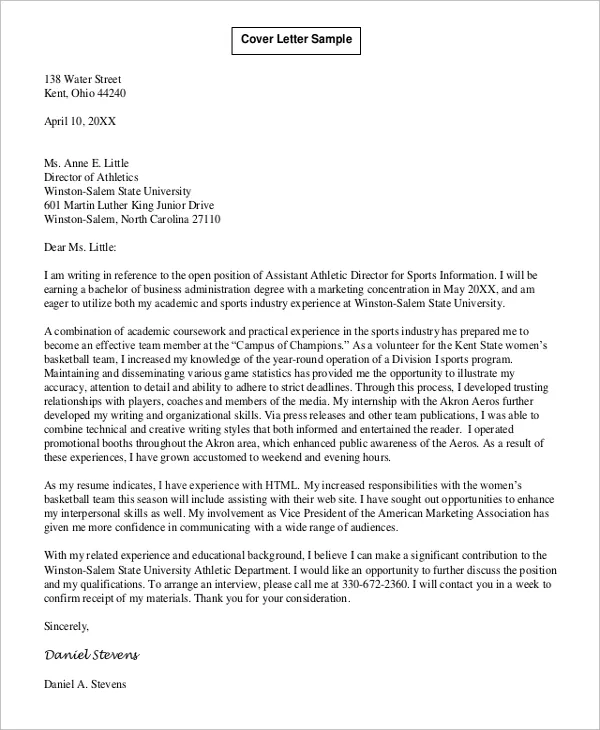What is a Resume Cover Letter
A resume cover letter is a crucial document that accompanies your resume when applying for a job. It serves as a personalized introduction, allowing you to highlight your key skills, experiences, and express your enthusiasm for the specific position and company. Unlike a resume, which provides a concise overview of your qualifications, a cover letter provides an opportunity to elaborate on your qualifications and make a strong case for why you are the perfect fit for the role. It demonstrates your communication skills and can significantly increase your chances of getting an interview. A well-crafted cover letter is a powerful tool in your job search arsenal.
Why Do You Need a Cover Letter
In today’s competitive job market, a cover letter is often a necessity. It provides context to your resume and allows you to showcase your personality and writing skills. Many hiring managers and recruiters consider a cover letter as important as the resume itself, as it provides valuable insights into your suitability for the role beyond the qualifications listed. It demonstrates your genuine interest in the position and the company, setting you apart from other applicants. Moreover, a cover letter allows you to address any potential gaps in your resume, such as career changes or periods of unemployment, and explain how your skills and experiences align with the job requirements. It’s a strategic tool to make a strong first impression.
Cover Letter vs Resume
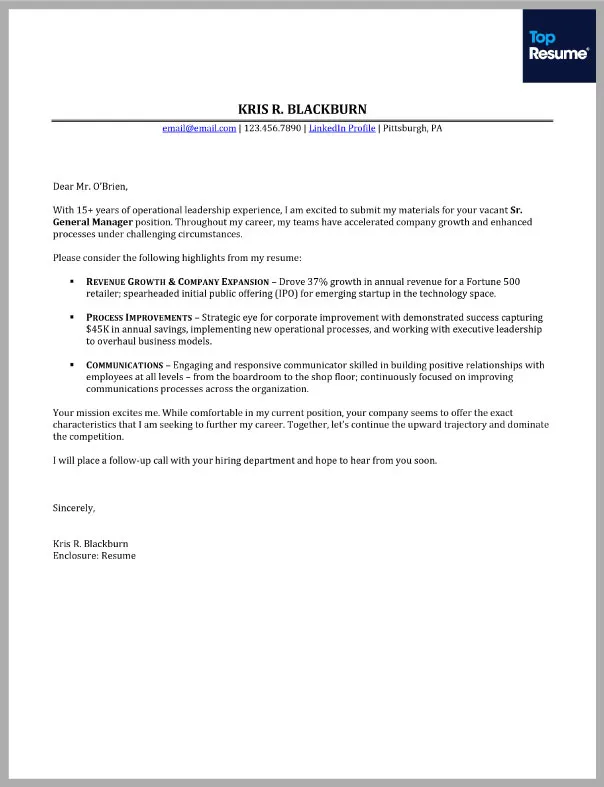
While both a resume and a cover letter are essential components of a job application, they serve different purposes. A resume is a factual summary of your work history, skills, education, and achievements. It’s a concise document designed to provide a quick overview of your qualifications. On the other hand, a cover letter is a more personalized and detailed document that introduces you to the hiring manager and expands on your qualifications, highlighting why you are the ideal candidate for the specific role. It’s your chance to tell a story about your career and explain how your skills and experiences align with the job requirements. Think of the resume as a list and the cover letter as a narrative. Consider this, use a cover letter to highlight soft skills or personality traits that may not be as readily apparent in your resume.
Key Elements of a Resume Cover Letter
A well-structured cover letter includes several key elements that work together to make a compelling case for your candidacy. These elements ensure that your cover letter is professional, informative, and engaging. By including the correct components, you ensure that you are communicating your value to the hiring manager.
Contact Information
Begin your cover letter with your contact information, including your name, phone number, email address, and optionally, your LinkedIn profile URL. This information should be at the top of your cover letter, mirroring the information on your resume. Make it easy for the hiring manager to contact you. Ensure your email address is professional.
Personalized Greeting
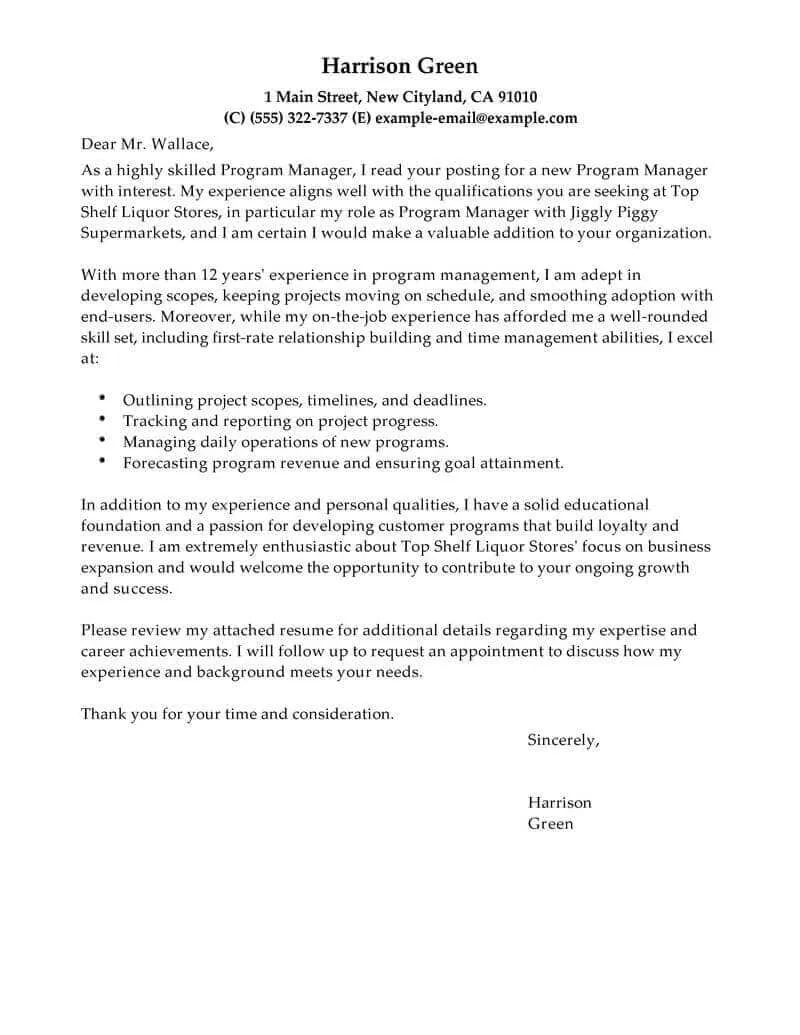
Always address your cover letter to a specific person, if possible. Research the hiring manager’s name or the name of the person responsible for hiring for the role. If you can’t find a name, use a professional greeting like “Dear Hiring Manager”. Avoid generic greetings like “To Whom It May Concern” as this can make your cover letter feel impersonal. Personalizing your greeting shows initiative and attention to detail.
Opening Paragraph
The opening paragraph is your first opportunity to capture the reader’s attention. State the position you are applying for and how you found the job posting. Briefly mention why you are interested in the role and the company, and give a quick overview of your relevant skills and experience. The opening paragraph sets the tone for the rest of your cover letter, so make it engaging and concise.
Body Paragraphs
The body paragraphs are where you elaborate on your qualifications, skills, and experiences. Use these paragraphs to demonstrate how your skills and experiences align with the job requirements. Provide specific examples of your accomplishments, quantify your achievements whenever possible, and showcase how your skills have benefited previous employers. Tailor the content to each job application, highlighting the most relevant aspects of your background.
Closing Paragraph
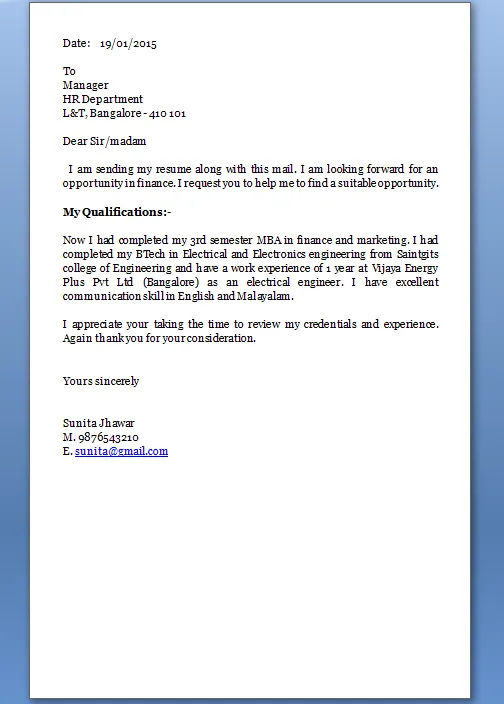
In the closing paragraph, reiterate your interest in the position and the company. Thank the hiring manager for their time and consideration, and express your enthusiasm for the opportunity. Include a call to action, such as stating that you look forward to hearing from them soon or that you are available for an interview at their earliest convenience. End your cover letter with a professional closing, such as “Sincerely” or “Best regards”, followed by your full name.
Formatting Your Cover Letter
The format of your cover letter is just as important as its content. Proper formatting makes your cover letter easy to read and demonstrates your professionalism. A well-formatted cover letter will immediately catch the eye of the hiring manager. Poor formatting can make it difficult to read and may leave a negative impression.
Font and Style
Choose a professional and readable font, such as Times New Roman, Arial, or Calibri. Use a font size between 10 and 12 points. Maintain consistent formatting throughout your cover letter, including font style, size, and spacing. Use a clear and simple style that is easy on the eyes. Avoid using overly elaborate fonts or styles that could distract from the content.
Length and Structure
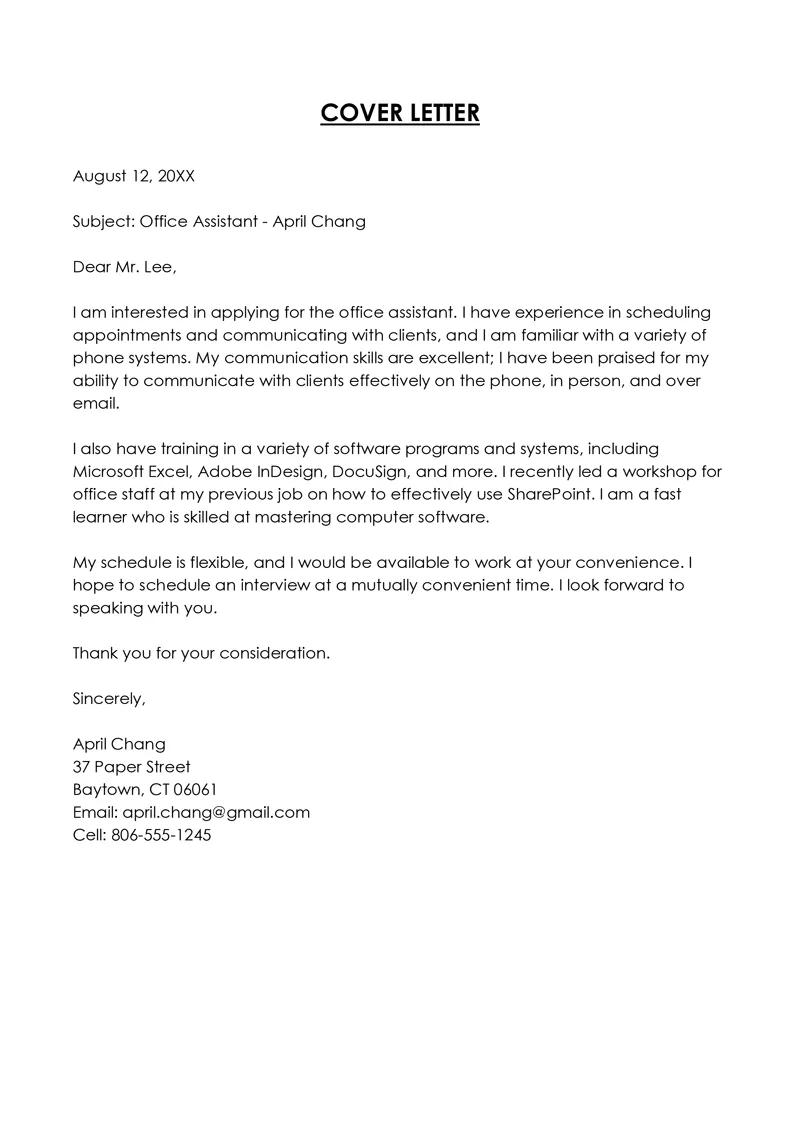
Keep your cover letter concise, ideally no longer than one page. Use clear headings and subheadings to organize your content and make it easy to read. Use concise paragraphs, and maintain consistent spacing between paragraphs. Use bullet points to highlight your key skills or achievements, if necessary. A well-structured cover letter is easy to scan and understand.
Cover Letter Examples
Reviewing cover letter examples can help you understand how to structure your own cover letter and what content to include. The examples below show how to tailor a cover letter for different situations and career levels. Adjust the examples to fit your personal experience.
Example 1: Entry-Level Position
This example is ideal for recent graduates or those with limited work experience. The focus is on showcasing skills, education, and any relevant internships or volunteer work. Highlight any projects or coursework that demonstrate your abilities and express enthusiasm for learning and contributing to the team. Emphasize transferable skills from other experiences, such as leadership roles or teamwork.
Example 2: Experienced Professional
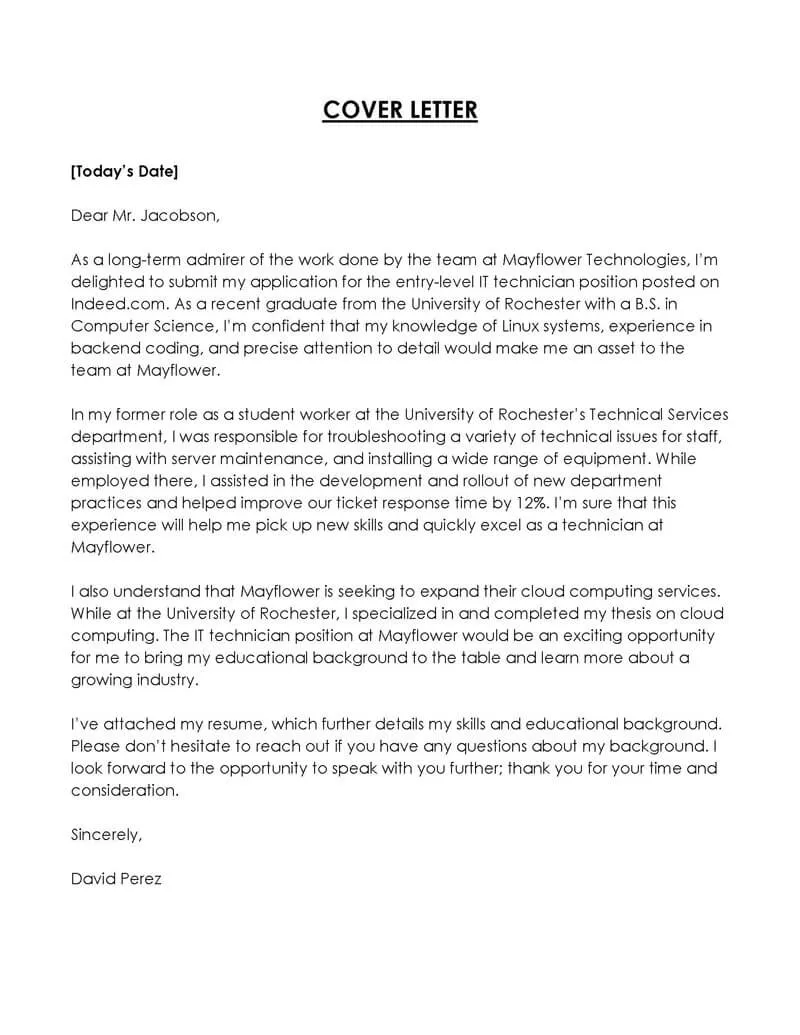
For experienced professionals, the cover letter should highlight significant achievements and results in previous roles. Provide specific examples of how you have contributed to the success of your previous employers. Quantify your achievements with data and metrics whenever possible. Demonstrate your expertise and leadership skills and explain why you are a good fit for the company based on your experience.
Example 3: Career Change
When changing careers, your cover letter should explain why you are transitioning and how your skills and experiences are transferable. Highlight the relevant skills and experiences that align with the new role, even if they come from different fields. Explain your motivation for the career change and demonstrate your enthusiasm for the new industry. Tailor your letter to show how your skills match the job requirements and convince the hiring manager of your value.
Tips for Writing a Compelling Cover Letter
Writing a compelling cover letter takes time and effort, but the results are well worth it. Use these tips to make your cover letter stand out and increase your chances of getting an interview. Use the tips in conjunction with your resume to paint a more clear picture.
Tailor to the Job
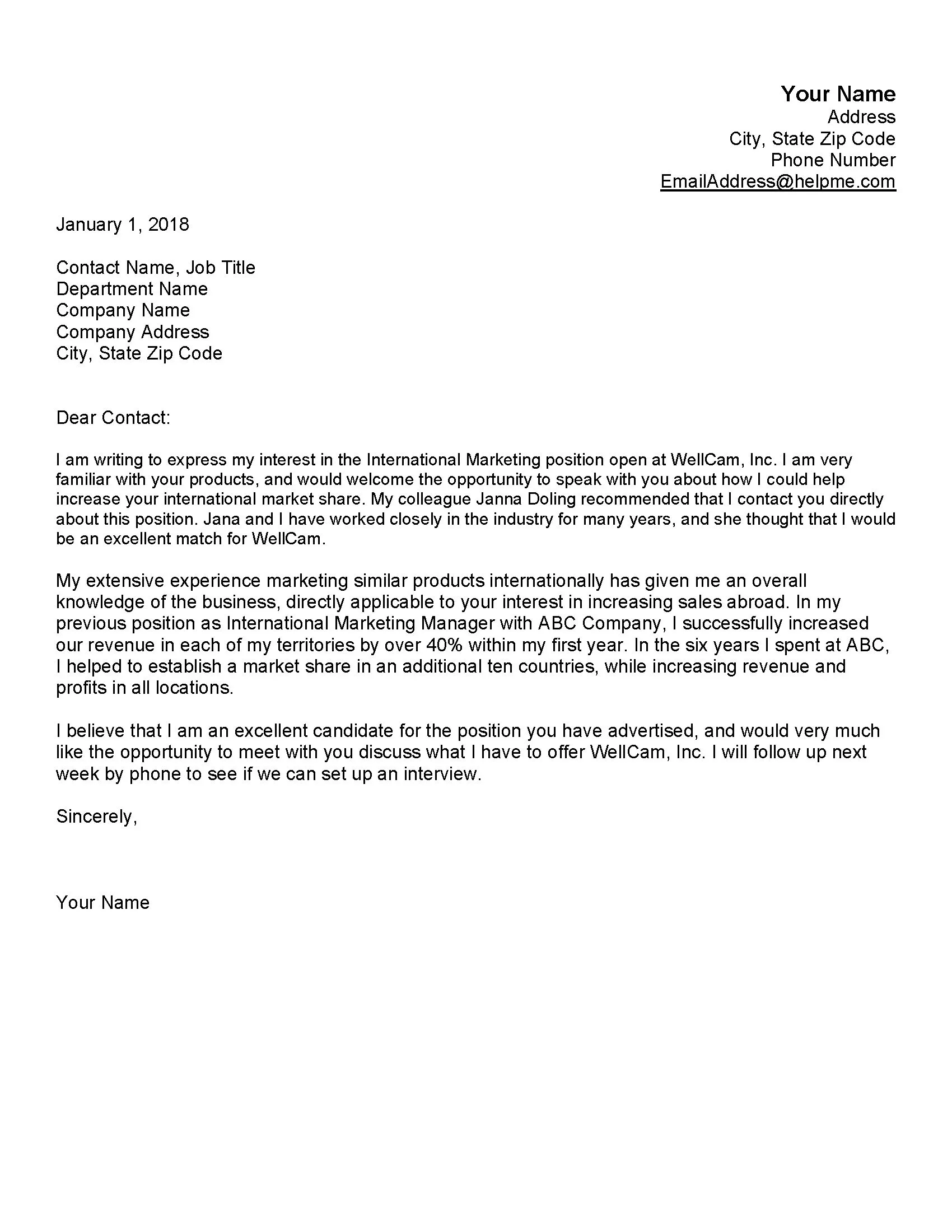
Customize your cover letter for each job application. Review the job description carefully and identify the key requirements and skills. Highlight your relevant experience and skills in your cover letter and explain how you meet the requirements. Avoid using a generic cover letter; instead, personalize it to reflect the specific needs of each role and company.
Highlight Key Skills
Focus on the skills and experiences that are most relevant to the job. Identify the key skills that the employer is looking for and showcase your expertise in those areas. Provide specific examples of your accomplishments and quantify your achievements whenever possible. Use keywords from the job description throughout your cover letter to help the hiring manager quickly identify your qualifications.
Proofread Carefully
Always proofread your cover letter for any typos, grammatical errors, and spelling mistakes. Ensure your cover letter is free of errors, as they can undermine your credibility and professionalism. Use a grammar checker and spell checker, but also read your cover letter carefully to catch any errors that automated tools might miss. Consider having a friend or family member review your cover letter as well.
Common Cover Letter Mistakes to Avoid
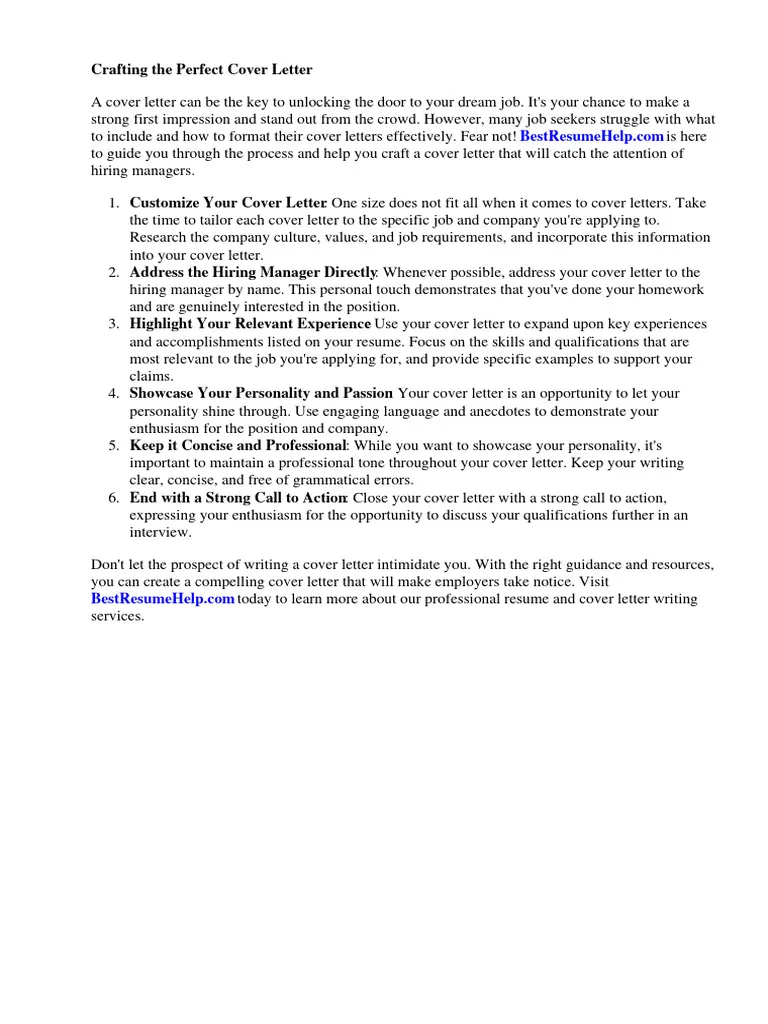
Avoid these common mistakes to ensure your cover letter makes a positive impression. Making any of these mistakes can negatively impact your application.
Generic Content
Avoid using a generic cover letter that is not tailored to the specific job and company. Personalize your cover letter to reflect the requirements of the role and demonstrate your genuine interest in the organization. Generic cover letters show a lack of effort and can make you look like you are not serious about the opportunity.
Typos and Grammatical Errors
Carelessly written cover letters with typos and grammatical errors will make you appear unprofessional. Always proofread your cover letter multiple times and use a grammar checker to catch any mistakes. Errors can create a negative impression and distract from your qualifications.
Not Addressing the Recipient
Avoid using generic greetings like “To Whom It May Concern” or failing to address the recipient by name. Research the hiring manager’s name and use it in your greeting. If you can’t find a name, use a professional greeting such as “Dear Hiring Manager.” Personalizing your greeting shows that you have taken the time to research the company and are genuinely interested in the position.
Conclusion
A well-crafted resume cover letter is an essential tool for anyone seeking a job. By following these guidelines, you can write a cover letter that grabs the attention of hiring managers and significantly increases your chances of landing an interview. Remember to tailor your cover letter to each job application, highlight your key skills and experiences, and always proofread carefully. With a compelling cover letter, you can effectively showcase your qualifications and demonstrate why you are the ideal candidate for the job. Good luck!
